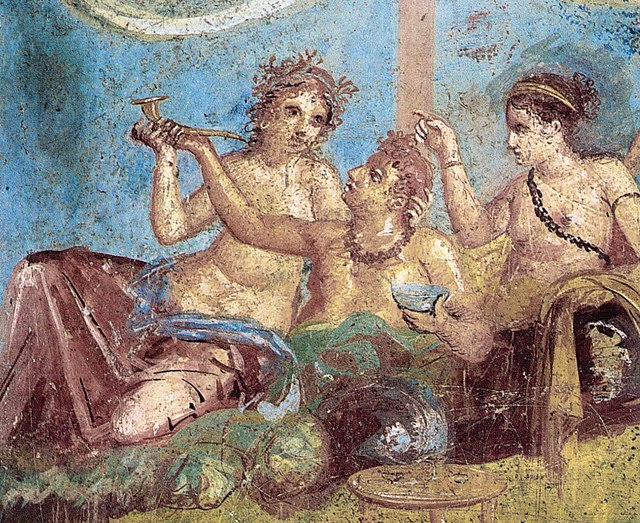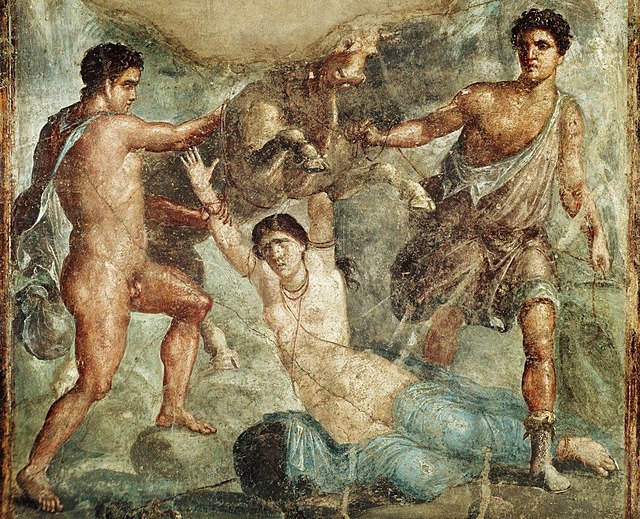The Pompeian Styles are four periods which are distinguished in ancient Roman mural painting. They were originally delineated and described by the German archaeologist August Mau (1840–1909) from the excavation of wall paintings at Pompeii, which is one of the largest groups of surviving Roman frescoes.
Roman fresco with a banquet scene from the Casa dei Casti Amanti, Pompeii
Fresco in the First style, from Ercolano
Still life in the Second style. Fresco from the home of Julia Felix, Pompeii
A Roman Second-style painting in the House of Marcus Fabius Rufus at Pompeii, Italy, depicting Cleopatra VII as Venus Genetrix and her son Caesarion as a cupid, mid-1st century BC
The art of Ancient Rome, and the territories of its Republic and later Empire, includes architecture, painting, sculpture and mosaic work. Luxury objects in metal-work, gem engraving, ivory carvings, and glass are sometimes considered to be minor forms of Roman art, although they were not considered as such at the time. Sculpture was perhaps considered as the highest form of art by Romans, but figure painting was also highly regarded. A very large body of sculpture has survived from about the 1st century BC onward, though very little from before, but very little painting remains, and probably nothing that a contemporary would have considered to be of the highest quality.
A fresco depicting wedding. In the center, a young bride is comforted and supported by Venus. 1st century BC, Rome
Preparation of an animal sacrifice; marble, fragment of an architectural relief, first quarter of the 2nd century CE; from Rome, Italy
A Roman fresco depicting Amphion and Zethus subject Dirce to the bull (from the House of the Vettii, Pompeii)
Female painter sitting on a campstool and painting a statue of Dionysus or Priapus onto a panel which is held by a boy. Fresco from Pompeii, 1st century








